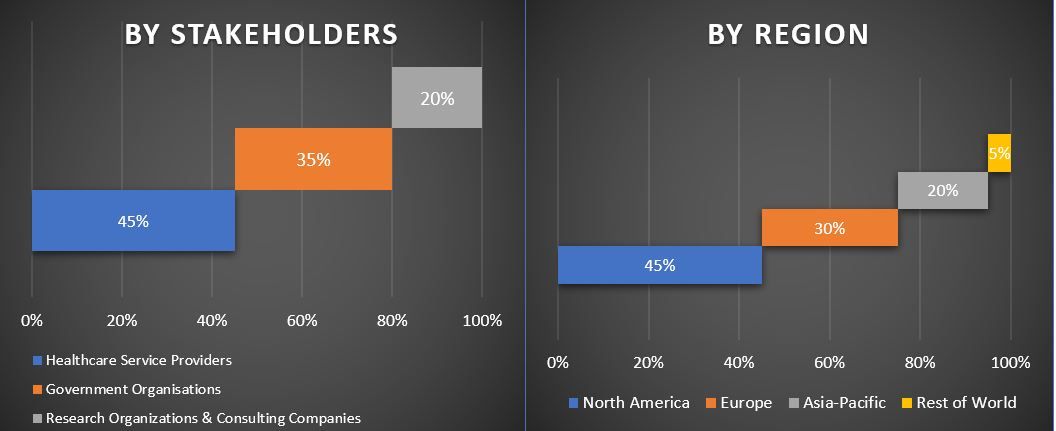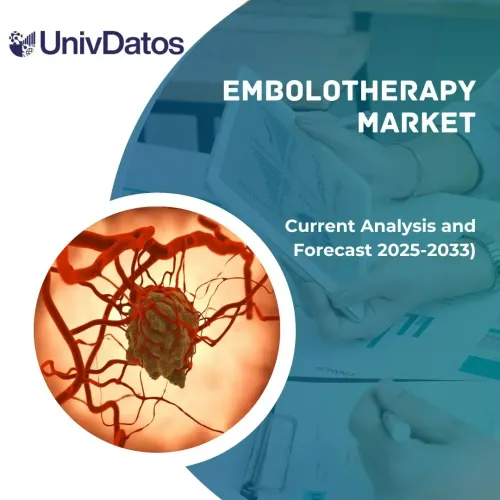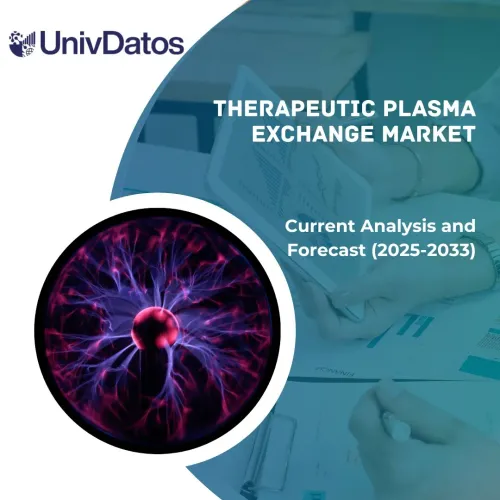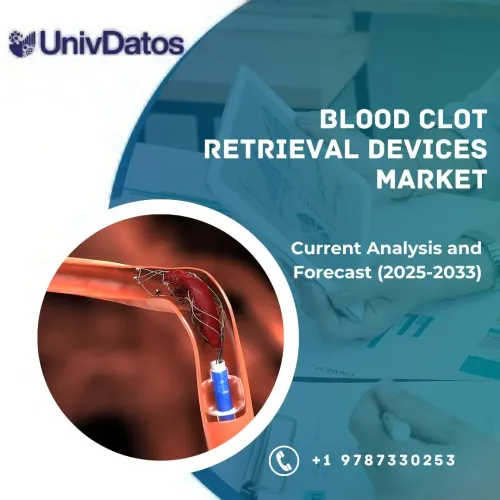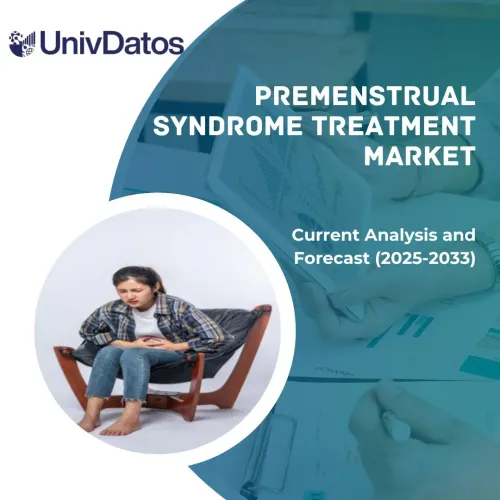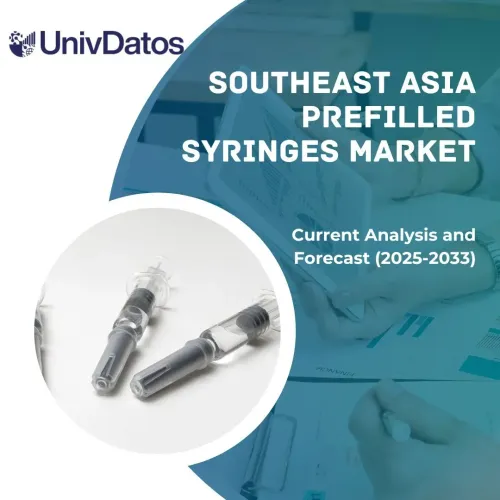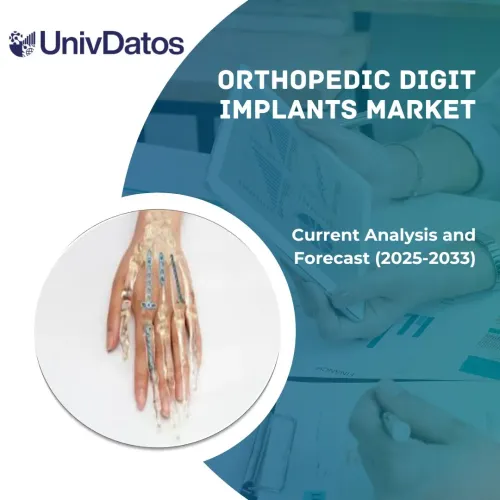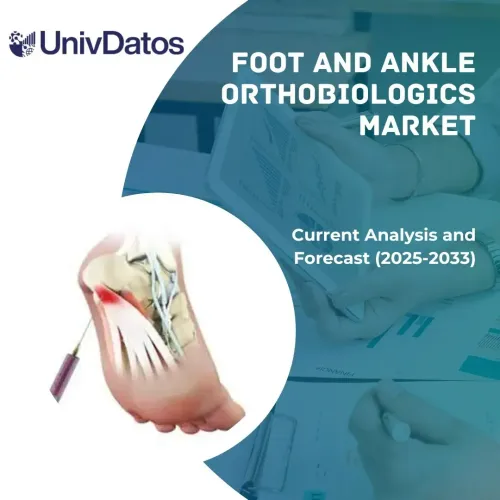オルガノイドおよびスフェロイド市場:現状分析と予測(2021年~2027年)
タイプ別(オルガノイド、スフェロイド); アプリケーション別(発生生物学、再生医療、個別化医療、薬剤毒性、有効性試験); エンドユーザー別(バイオテクノロジー&製薬業界、病院&診断センター、学術&研究機関); 地域および国
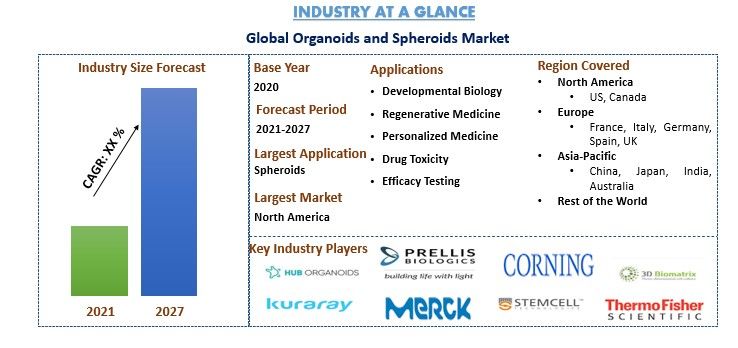
オルガノイドおよびスフェロイド市場は、2020年には約5億米ドルと評価され、予測期間(2021年~2027年)には約23%のCAGRで成長すると予想されています。慢性疾患および感染症の発生率と有病率の増加、治療ツールとしてのオルガノイドの採用、創薬および個別化医療におけるオルガノイドの応用、研究開発におけるオルガノイドの使用が、世界のオルガノイド市場を牽引すると予想されます。世界の市場は、細胞生物学、遺伝子治療、再生医療、がん研究、および疾患モデリングの重要なツールとしてのオルガノイドの応用によって牽引されています。技術の進歩は、予測期間中に世界のオルガノイド市場を牽引すると予想されます。
たとえば、2019年、Hubrecht Organoid Technologyは、オルガノイド技術を使用した前臨床腫瘍薬の開発を提供し、オランダに新しいオルガノイドに焦点を当てた運用サイトを開設することにより、ヨーロッパでのプレゼンスを拡大するために、JSR株式会社と戦略的パートナーシップを締結しました。
最近の慢性疾患の有病率の増加により、効果的な薬の需要が高まっています。オルガノイドおよびスフェロイドモデルは、人間の発達生物学の研究により良い視点を提供するため、ますます人気が高まっています。オルガノイドモデルは、いくつかの腸細胞に対するcovid-19の影響を明らかにします。したがって、これらのモデルは、ワクチン開発プロセスにおいて重要な役割を果たしています。これらの慢性疾患に対する診断および治療ソリューションの需要の増加が、市場の成長を後押ししています。オルガノイドおよびスフェロイドは、人体に存在するさまざまな組織の状態を複製する3次元構造です。オルガノイドモデルは、生物学的発達の研究のためのin-vitroモデルとして機能します。最近の慢性疾患の有病率の増加により、効果的な薬の需要が高まっています。オルガノイドおよびスフェロイドモデルは、人間の発達生物学の研究により良い視点を提供するため、ますます人気が高まっています。オルガノイドモデルは、いくつかの腸細胞に対するcovid-19の影響を明らかにします。したがって、これらのモデルは、ワクチン開発プロセスにおいて重要な役割を果たしています。これらの慢性疾患に対する診断および治療ソリューションの需要の増加が、市場の成長を後押ししています。
2020年、研究者らは、SARS-CoV-2の侵入とその組織への拡散のメカニズムを研究するために、3D培養モデルを使用してミニ肺を開発しました。オルガノイドは、SARS-CoV-2に対する組織の防御メカニズムを研究するためにも使用されています。
2019年、ATCCは、Human Cancer Models Initiative(HCMI)と協力して、オルガノイドを含む次世代の2Dおよび3D患者由来in-vitroがんモデルを発売しました。
オルガノイドとスフェロイドのバリューチェーン分析
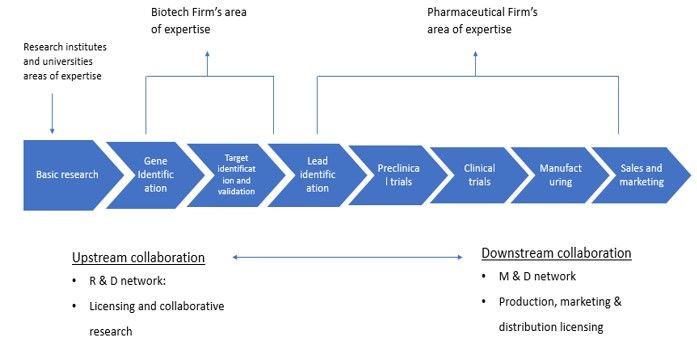
3D BioMatrix、Hubrecht Organoid Technology(HUB)、Kuraray、Prellis Biologics、Merck KGaA、3D Biotek、STEMCELL Technologies Inc.、Cellesce Ltd.、Corning Incorporated、AMS Biotechnology Limited、Greiner Bio-One、InSphero/Perkin Elmer、Lonza、およびThermo Fisher Scientific、Inc.は、世界のオルガノイドおよびスフェロイド市場の主要なプレーヤーの一部です。
レポートで提示された洞察
「タイプ別では、スフェロイドのセグメントが大きなシェアを占めています。」
タイプに基づいて、世界のオルガノイドおよびスフェロイド市場は、オルガノイドとスフェロイドに分類されます。2020年には、スフェロイド市場セグメントが最大の収益シェアを占めました。そのような細胞培養の高い需要と、創薬、がん生物学、およびin-vitro毒性学研究におけるその多様な適用性が、その主要なセグメントドライバーでした。スフェロイドは、がん細胞と同様の発達パターンを持ち、再培養して同様の細胞コピーを作成したり、計数したり、機器で形態学的に測定したりできます。
「アプリケーション別では、発生生物学セグメントが予測期間中に市場を支配しました。」
アプリケーションに基づいて、発生生物学市場セグメントは、2020年に世界のオルガノイドおよびスフェロイド市場で主要な収益シェアを保持しました。この高い収益シェアは、人間の発生生物学におけるそのような培養システムの利用の増加によるものです。オルガノイドは、誘導多能性幹細胞(iPSCs)および胚性幹細胞に由来し、胚発生、ホメオスタシス、および系図分析の研究に役立ちます。これらのモデルは、骨形成タンパク質、線維芽細胞成長因子、およびWNTシグナル伝達経路の誘導を通じて、脳、胃、および膵臓の発生プロセスを研究するためにすでに使用されています。
「エンドユーザー別では、病院のセグメントが予測期間中に市場を支配しました。」
エンドユーザーに基づいて、製薬およびバイオテクノロジー産業セグメントが2019年に最大のシェアを保持しました。これは、オルガノイドおよびスフェロイドの潜在的な臨床応用における上昇、主要なプレーヤーによる前臨床創薬におけるオルガノイドおよびスフェロイドの高い利用率、製薬研究機関におけるオルガノイドおよびスフェロイド培養の加速された取り込み、主要なプレーヤー間のコラボレーションの増加、および製薬スタートアップの上昇などの要因によるものです。
「北米は、オルガノイドとスフェロイド市場の最大の市場の1つを表しています。」
オルガノイドおよびスフェロイド市場は、北米(米国、カナダ、および北米の残りの地域)、ヨーロッパ(ドイツ、フランス、イタリア、スペイン、英国、およびヨーロッパの残りの地域)、アジア太平洋(中国、日本、インド、オーストラリア、およびAPACの残りの地域)、および世界の残りの地域などの国における世界的なプレゼンスに基づいて分析されます。北米は、使い捨て医療機器センサーの主要な市場であり、この地域に確立されたプレーヤーが存在し、プレーヤーによるヘルスケアR&Dへの投資が新たに発生しているため、2020年にXX百万米ドルの収益を生み出しました。ただし、アジア太平洋地域は、予測期間中に最高のCAGRで成長します。
このレポートを購入する理由:
- この調査には、認証された主要な業界専門家によって検証された市場規模および予測分析が含まれています
- このレポートは、業界全体のパフォーマンスの概要を一目で示します
- このレポートは、主要な事業財務、製品ポートフォリオ、拡張戦略、および最近の開発に重点を置いた、著名な業界ピアの詳細な分析をカバーしています
- 業界で普及しているドライバー、制約、主要なトレンド、および機会の詳細な調査
- この調査は、さまざまなセグメントにわたって市場を包括的にカバーしています
- 業界の地域レベルの詳細な分析
カスタマイズオプション:
オルガノイドおよびスフェロイド市場は、要件またはその他の市場セグメントに応じてさらにカスタマイズできます。これに加えて、UMIは、お客様が独自のビジネスニーズを持っている可能性があることを理解しているため、お客様の要件に完全に適合するレポートを入手するためにお気軽にご連絡ください
目次
グローバルリキッドバイオプシー市場の歴史的市場の分析、現在の市場の推定、および将来の市場の予測は、グローバルな主要地域におけるさまざまな手術に対するリキッドバイオプシーの採用を調査および分析するために行われた3つの主要なステップでした。徹底的な二次調査を実施して、過去の市場数値を収集し、現在の市場規模を推定しました。次に、これらの洞察を検証するために、多数の調査結果と仮定が考慮されました。さらに、リキッドバイオプシーセクターのバリューチェーン全体の業界専門家との徹底的な主要インタビューも実施されました。主要なインタビューを通じて市場の数値を仮定および検証した後、トップダウン/ボトムアップアプローチを採用して、完全な市場規模を予測しました。その後、市場の内訳とデータの三角測量法を採用して、業界が関係するセグメントおよびサブセグメントの市場規模を推定および分析しました。詳細な方法論については、以下で説明します。
過去の市場規模の分析
ステップ1:二次ソースの詳細な調査:
年次報告書と財務諸表、業績プレゼンテーション、プレスリリースなどの企業内部情報源、およびジャーナル、ニュースと記事、政府刊行物、競合他社の刊行物、セクターレポート、サードパーティデータベース、その他の信頼できる刊行物などの外部情報源を通じて、リキッドバイオプシーの過去の市場規模を取得するために、詳細な二次調査を実施しました。
ステップ2:市場セグメンテーション:
リキッドバイオプシー市場の過去の市場規模を取得した後、主要地域におけるさまざまなテクノロジーおよび機器タイプの過去の市場の洞察とシェアを収集するために、詳細な二次分析を実施しました。レポートに含まれる主なセグメントは、癌の種類、循環バイオマーカー、製品、エンドユーザー、および地域です。さらに、リキッドバイオプシーの全体的な採用を評価するために、国レベルの分析を実施しました。
ステップ3:要因分析:
さまざまなセグメントとサブセグメントの過去の市場規模を取得した後、リキッドバイオプシーの現在の市場規模を推定するために、詳細な要因分析を実施しました。さらに、リキッドバイオプシーの急増する需要などの従属変数と独立変数を使用して要因分析を実施しました。トップパートナーシップ、合併と買収、事業拡大、および世界中のリキッドバイオプシー業界における製品の発売を考慮して、需要と供給側のシナリオについて徹底的な分析を実施しました。
現在の市場規模の推定と予測
現在の市場規模の決定:上記の3つのステップからの実用的な洞察に基づいて、現在の市場規模、リキッドバイオプシー市場の主要なプレーヤー、およびセグメントの市場シェアに到達しました。必要な割合のシェア分割と市場の内訳はすべて、上記の二次的アプローチを使用して決定され、主要なインタビューを通じて検証されました。
推定と予測:市場の推定と予測については、推進要因とトレンド、制約、および利害関係者が利用できる機会を含むさまざまな要因に重みが割り当てられました。これらの要因を分析した後、関連する予測手法、つまりトップ/ダウン/ボトムアップアプローチを適用して、世界中の主要市場全体のさまざまなセグメントとサブセグメントについて、2027年頃の市場予測に到達しました。市場規模を推定するために採用された調査方法には、以下が含まれます。
- 価値(米ドル)の観点からの業界の市場規模、および国内の主要市場全体でのリキッドバイオプシーの採用率
- 市場セグメントとサブセグメントのすべての割合のシェア、分割、および内訳
- 提供されるサービスの観点からのリキッドバイオプシー市場の主要プレーヤー。また、この急速に成長している市場で競争するためにこれらのプレーヤーが採用した成長戦略
市場規模とシェアの検証
一次調査:主要な地域全体のトップレベルのエグゼクティブ(CXO/VP、セールスヘッド、マーケティングヘッド、オペレーションヘッド、および地域ヘッド、カントリーヘッドなど)を含む主要なオピニオンリーダー(KOL)との詳細なインタビューを実施しました。次に、一次調査の結果を要約し、統計分析を実行して、述べられた仮説を証明しました。一次調査からのインプットは二次的な調査結果と統合され、それによって情報を実用的な洞察に変えました。
さまざまな地域における主要な参加者の分割
市場エンジニアリング
データ三角測量法を採用して、全体的な市場の推定を完了し、リキッドバイオプシー市場の各セグメントとサブセグメントの正確な統計数値を導き出しました。データをいくつかのセグメントとサブセグメントに分割し、リキッドバイオプシー市場の種類と製品の種類の分野におけるさまざまなパラメータとトレンドを調査しました。
リキッドバイオプシー市場調査の主な目的
リキッドバイオプシーの現在および将来の市場トレンドは、調査で正確に指摘されました。投資家は、調査で実施された定性的および定量的分析から、投資の裁量に基づいて戦略的な洞察を得ることができます。現在および将来の市場トレンドは、地域レベルでの市場の全体的な魅力を決定し、産業参加者が未開拓の市場を利用して、先発者利益として利益を得るためのプラットフォームを提供しました。調査のその他の定量的な目標には、以下が含まれます。
- 価値(米ドル)の観点から、リキッドバイオプシーの現在および予測市場規模を分析します。また、さまざまなセグメントおよびサブセグメントの現在および予測市場規模を分析します
- 調査のセグメントには、アプリケーション、製品タイプ、およびエンドユーザーセクターの分野が含まれます。
- リキッドバイオプシー業界の規制の枠組みの定義と分析
- 業界の顧客と競合他社の行動を分析するとともに、さまざまな仲介業者の存在に関連するバリューチェーンを分析します
- 主要地域のリキッドバイオプシー市場の現在および予測市場規模を分析します。
- レポートで調査された主要地域には、北米(米国およびカナダ)、ヨーロッパ(ドイツ、フランス、英国、スペイン、イタリア)、アジア太平洋(中国、日本、オーストラリア、インド)、その他の地域が含まれます
- リキッドバイオプシー市場の企業プロファイル、および市場のプレーヤーがこの急速に成長している市場で持続するために採用した成長戦略。
- 業界の詳細な地域レベルの分析
関連 レポート
この商品を購入したお客様はこれも購入しました

